
4 May 2015
Horowhenua District Council
Private Bag 4002
File ref: 1/4/HDC
LEVIN 5540
6009 – 6012, 102259
SGS
Attention Gerry O‟Neil
Dear Gerry
LEVIN LANDFILL 25 MARCH 2015 ROUTINE SITE INSPECTION AND
ASSESSMENT OF OCTOBER 2014 AND JANUARY 2015 QUARTERLY
MONITORING RESULTS
A routine site visit of the Levin Landfill was carried out on 25 March 2015. In
addition to the information gathered during this site visit data contained in the
MWH October 2014 and January 2015 quarterly reports has been used to
assess how the landfill has performed with the relevant consent conditions.
As a result of this assessment resource consents 6009, 6010, 6012 and 102259
have been given an overall
Comply - Full grading. Resource consent 6011 has
been graded as
Comply – At Risk. Please note that since the Landfill is at the
time of this invoice complying with the conditions of its resource consents, the
compliance monitoring charges are 70 per cent of the full charge as detailed in
the attached cost sheet.
Please find attached a copy of Horizons Regional Council‟s Compliance
Assessment Guidelines for your reference.
If you have any queries about the attached report, please contact me via email
[email address] or on 0508 800 800.
Kind regards
Stuart Standen
CONSENTS MONITORING OFFICER

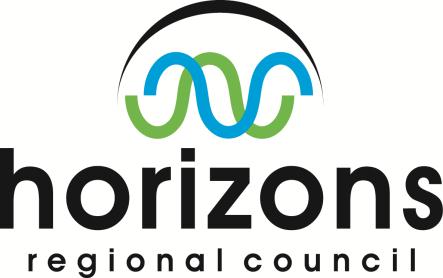 COMPLIANCE REPORT
LEVIN LANDFILL
COMPLIANCE REPORT
LEVIN LANDFILL
Consent
6009 – 6012 & 102259
Reporting Period
October 2014 – January 2015 Quarterly Reports
25 March 2015 Routine Inspection
May 2015
 EXECUTIVE SUMMARY
EXECUTIVE SUMMARY
This compliance report assesses compliance against resource consents 6009, 6010, 6011,
6012 and 102259 for a routine site inspection carried out on 25 March 2015 and
environmental monitoring results contained within the October 2014 and January 2015
quarterly monitoring reports.
As a result of this assessment resource consents 6009, 6010, 6012 and 102259 have been
given an overall
Comply - Full grading. This is because relevant conditions associated with
these consents were being complied with at the time of the inspection and when assessing
monitoring data. Resource consent 6011 has been graded as
Comply – At Risk. This is
because HDC have been complying with conditions of this resource consent however, based
on comments in the MWH
Levin Landfill Odour Assessment report and the sand capping of
Stage 2 there is a risk of HDC non-complying with condition 3.
An HRC compliance report dated 1 October 2014 identified an increasing trend in leachate
parameters in bore C2DD. The report contained a recommendation for HDC to investigate if
this increase and determine if the bore has been sealed appropriately. HDC advised HRC in
a letter dated 3 October 2014 that this bore will be investigated by 17 October 2014. To date
I am unaware if HRC has received confirmation this task has been carried out and any
remedial actions required. Can you please update me by
29 May 2015 regards this issue.
Based on the routine inspection and assessing the quarterly report monitoring data the
following points require further information to be provided to HRC.
ELS laboratories do not hold accreditation for Volatile Fatty Acids. Can you please confirm to
HRC by 29 May 2015 if HDC has carried out a duplicate sample to satisfy condition 10 of
resource consent 6010.
In light of leachate contaminated groundwater entering the Tatana Drain it is required HDC
include this information when calculating future mass load calculations in accordance with
condition 11(d) of resource consent 6010.
Can you confirm if the Frank‟s drain is used for domestic supply to ensure the intent of
condition 13 of resource consent 6010 is met and can be assessed.
Leachate breakout and settlement observation records for the 2014/15 period are required to
be included in the 2015 annual report in accordance with condition 28 and 29 of resource
consent 6010.
It is recommended the wilding pines and black berry on the old landfill cap are removed. This
is they obstruct the side slope for a visual assessment of the cap.
Condition 3 of resource consent 6011 was graded as
Comply – At Risk. This is because
HDC is complying, since January 2015 and at the time of the inspection. However there is a
risk of a non-compliance occurring based on comments contained in the MWH
Levin Landfill
Odour Assessment report.
Comments under condition 5 of resource consent 6011 relates to HDC efforts to reduce or
mitigate against odours being discharged beyond the property boundary. Can you please
confirm by
29 May 2015 when these tasks are expected to be carried out.
2
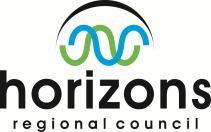
Areas on Stage 1 were identified during the site inspection where clean stormwater could be
diverted from Stage three. Can you confirm if HDC plan to install a cut off drain to reduce the
volume of leachate generated on site in accordance with condition 10 of resource consent
102259.
GENERAL CONDITIONS APPLICABLE TO THE LEVIN
LANDFILL ROUTINE SITE INSPECTION AND THE
OCTOBER 2014 AND JANUARY 2015 QUARTERLY REPORT
ASSESSMENT
Discharge Permit 6010
General Conditions – Discharge leachate to ground
2.
Landfill leachate shall not contaminate adjoining land.
As observed during the site inspection there were no signs landfill leachate had discharged
from the lined section of the landfill, leachate pond or closed landfill or discharged overland
and contaminated adjoining land.
HRC advised HDC in an email dated 10 April 2015 the non-compliance report dated 31
October 2014 will be rescinded. Therefore this condition will be graded as
Comply – Full.
3.
The Permit Holder shall commence the following monitoring programme:
Table A: Landfill Groundwater Monitoring Locations, Parameters, and Frequency
– Deep Aquifer Wells
The deep aquifer bores were sampled for the indicator list of parameters during the October
sampling round and for the comprehensive list of parameters during the January sampling
round. This is in accordance with Table A of this condition.
Comply – Full
Table B: Summary of Landfill Groundwater Monitoring Locations, Parameters,
and Frequency – Shallow Aquifer Wells
The shallow aquifer bores were sampled for the indicator list of parameters during the
October sampling round and for the comprehensive list of parameters during the January
sampling round. This is in accordance with Table B of this condition.
Comply – Full
Groundwater levels are to be measured and recorded during each sampling procedure.
Ground water depths for each bore are recorded in the tabulated results in Appendix D of the
annual report.
Comply – Full
Table C: Other Water Monitoring Locations, Frequencies and Parameters
The Hokio Stream was sampled for the indicator list of parameters during the October
sampling round and for the comprehensive list of parameters during the January sample
round. This is in accordance with Table C of this condition.
Comply – Full
3
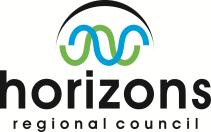 Table D: Monitoring Point Locations
Table D: Monitoring Point Locations
Bores listed in Table D have been sampled during the October and January sampling
rounds.
Comply – Full
4.
The Permit Holder shall monitor soils in the irrigated areas. The first soil samples
from an irrigation area shall be taken in the first year that leachate is irrigated to land
in that area and shall be taken prior to irrigation. Thereafter, samples shall be taken
on the schedule provided in Table H.
Table H: Soil Monitoring Locations, Parameters, and Frequencies
Table I: Irrigated Soil Analysis List
As mentioned in a previous compliance report leachate is no longer irrigated to land
therefore soil monitoring is no longer required.
Not Assessed
5.
The results of monitoring under Conditions 3 and 4 of this Permit shall be reported to
the Regional Council by 31 August each year for the duration of this Permit.
Monitoring results are submitted to HRC on a quarterly basis therefore exceeding this
consent requirement.
Comply – Full
6.
The Permit Holder shall ensure the above monitoring programme is undertaken by
either the Regional Council, or, an independent organisation approved by the
Environmental Protection Manager of the Regional Council.
Environmental reporting and monitoring is carried out by MWH New Zealand Ltd and Downer
in accordance with this condition.
Comply – Full
7.
The Permit Holder shall inform the Neighbourhood Liaison Group of the identity of the
organisation carrying out the monitoring.
Not Assessed
8.
The Permit Holder shall meet the costs of the monitoring.
Comply – Full
9.
The Permit Holder shall report the results of the monitoring to the Neighbourhood
Liaison Group by 31 August each year for the duration of the Permit.
Monitoring results are reported to the NLG at the community meetings.
Comply – Full
4
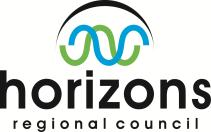 10.
If a laboratory is used for water quality analyses which do not have independent
10.
If a laboratory is used for water quality analyses which do not have independent
accreditation for the parameters measured, then on each sampling occasion
duplicate samples from a least one sampling location shall be analysed by a
laboratory with independent accreditation for the parameters measured. Continued
analysis by the unaccredited laboratory shall be at the discretion of the Regional
Council.
It is noted that ELS Laboratories use a non accredited test for Volatile Fatty Acids. There is
no information on HRC files confirming that a duplicate sample has been collected in
accordance with this condition requirement. Can you please confirm if HDC has carried out a
duplicate sample to satisfy this condition.
Not Yet Assessed
11.
(a)
Should any shallow aquifer groundwater and surface water parameters tested
for under Condition 3 of this consent exceed the Australian and New Zealand
Environment and Conservation Council Water Quality Guidelines (2000) for Livestock
Watering, the Permit Holder shall report to the Regional Council as soon as
practicable on the significance of the result and, where the change can be attributed
to landfill leachate, consult with the Regional Council to determine if further
investigation or remedial measures are required.
The MWH quarterly reports compare shallow groundwater and Hokio Stream results against
the Australian and New Zealand Environment and Conservation Council Water Quality
Guidelines for Livestock watering (ANZECC).
Results show there were no exceedances of the ANZECC guidelines in samples collected
from the shallow aquifer during the October and January sampling round.
There were exceedances of the ANZECC faecal coliform limit at all three Hokio Stream
sampling sites during the January sampling round. Faecal coliforms were 340 cfu/100ml at
the upstream sampling site and 340 and 300 cfu/100ml at the two downstream sampling
sites. This indicates the exceedance of the consent limit was due to background faecal
coliforms and not due to landfill leachate. Therefore this condition will be graded as
Comply
– Full
(b)
Should any surface water parameters tested for under Condition 3 of this
consent indicate a decline in water quality between monitoring points HS1 and
HS3, as referred to in Table E, the Permit Holder shall report to the Regional
Council as soon as practicable on the significance of the result and, where the
change can be attributed to landfill leachate, consult with the Regional Council
to determine if further investigation or remedial measures are required.
The quarterly reports states, based on leachate indicator parameters, the Hokio Stream is
not being impacted by leachate.
Comply – Full
(c)
In the event that a report is submitted to the Regional Council pursuant to
Conditions 11(a) or 11(b) and the Regional Council has determined that
further investigation or remediation measures are required, then:
(i)
The Regional Council may require the Permit Holder to develop a
mitigation or remediation plan.
5
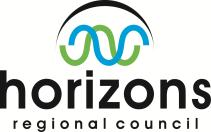 (ii)
In the event that the Regional Council determines that a mitigation or
(ii)
In the event that the Regional Council determines that a mitigation or
remediation plan is required, the Regional Council shall advise the
Permit Holder of this requirement in writing within two months of
receiving the Condition 11(a) or 11(b) report.
(iii)
Within six months of receipt of advice in writing from the Regional
Council pursuant to Condition 11(c) (ii), the Permit Holder shall submit
a mitigation or remediation plan to the Regional Council for approval.
(iv)
Any mitigation or remediation plan prepared in accordance with
Condition 11(c) shall include a timetable for implementation.
(v)
Following approval of a mitigation or remediation plan prepared in
accordance with Condition 11(c) (iii), if the Regional Council
determines that the adverse effects of the landfill activity itself on the
shallow groundwater aquifer or surface water will be more than minor,
the Regional Council shall require the Permit Holder to implement the
plan within the timeframe specified in the timetable for implementation
required by Condition 11(c) (iv).
6
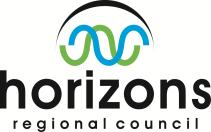 (d)
The Permit Holder shall annually review the data derived from the groundwater
monitoring program and evaluate contaminant mass load projections for discharges from the
(d)
The Permit Holder shall annually review the data derived from the groundwater
monitoring program and evaluate contaminant mass load projections for discharges from the
landfill to the Hokio Stream. The contaminant mass load projections shall be based
primarily, but not exclusively, on the monitoring data obtained for the “B” and “C” series bores
indicated in Table D of this discharge permit. The annual report required under Condition 5
shall include the following information:
(i)
A summary of the methodology used to calculate the mass load projections.
(ii)
The calculated mass loads transported in the groundwater and comparable
mass loads in the Hokio Stream.
(iii)
An analysis of the implications of the mass load calculations with respect to
ensuring discharges from the landfill would not result in a decline in the water
quality in the Hokio Stream under Condition 3.
In light of leachate contaminated groundwater “day lighting” into the Tatana Drain it is
recommended that HDC include these results when calculating the mass load calculations.
The latest calculation will be assessed when the 2015 annual report is submitted to HRC.
Not Yet Assessed
(e)
Should the groundwater parameters tested for under Condition 3 of this consent, and
subsequent evaluation and indicative assessment of contaminant mass loads under
Condition 11(d) of this consent indicate that contaminants sourced from either the
closed or active areas of the Levin Landfill are likely to result in a future decline in the
water quality of the Hokio Stream, as defined under Condition 3, then:
(i)
The Permit Holder shall include in the annual report required by Condition 5
an analysis of the significance of the result.
(ii)
The Regional Council may at any time require the Permit Holder to undertake
further investigations and/or conduct a detailed assessment of mass loads to
evaluate the actual likelihood of a future decline in water quality of the Hokio
Stream as a result of landfill activities as measured under Condition 3. The
Permit Holder shall provide a report to the Environmental Protection Manager
at the Regional Council documenting the further investigations undertaken or
the methodology, procedure and outcomes of the detailed assessment.
(iii)
If the work required under Condition 11(e) (ii) discloses an actual likelihood of
a future water quality decline of the Hokio Stream as a result of landfill
activities, and the Regional Council determines that this decline in water
quality would constitute a more than minor effect on the water quality of the
Hokio Stream, the Regional Council shall require the Permit Holder to develop
a mitigation or remediation plan.
(iv)
For the purposes of quantifying whether the adverse effects of the landfill
activity itself on the water quality of the Hokio Stream will be more than minor,
any determination made by the Regional Council may be independently peer
reviewed, at the request of either the NLG or the Permit Holder, by an
appropriately qualified and experienced person. The request for a peer
review must be lodged with the Regional Council within a period of one month
following the determination by the Regional Council.
7

The peer reviewer shall prepare a detailed report which analyses the determination of
adverse effects made by the Regional Council, and provide clear recommendations
as to whether implementation of a mitigation or remediation plan is required for the
purposes of adopting the best practicable option to remove or reduce the more than
minor adverse effect on the water quality of the Hokio Stream. This report shall be
completed within a period of three months of the request for a peer review.
Should a peer review of the determination be undertaken, the Regional Council shall
take into account the outcome of the review in again determining whether this decline
in the water quality of the Hokio Stream would constitute a more than minor effect on
the water quality of that stream.
(v)
In the event that the Environmental Protection Manager at the Regional
Council determines that a mitigation or remediation plan is required, the
Regional Council shall advise the Permit Holder of this requirement in writing
within two months of receiving the annual report.
(vi)
Within six months of receipt of advice in writing from the Regional Council
pursuant to Condition 11(e) (v) the Permit Holder shall submit a mitigation or
remediation plan to the Regional Council for approval.
(vii)
Any mitigation or remediation plan prepared in accordance with Condition
11(c) or Condition 11(e) (v) shall include a timeframe or threshold for
implementation.
(viii) Following the completion of the mitigation or remediation plan, if the Regional
Council determines that the potential adverse effects of the landfill activity
itself on the water quality of the Hokio Stream, as monitored under Condition
3, continue to be more than minor, the Regional Council shall require the
Permit Holder to implement the plan within the timeframe specified in the
timetable for implementation required by Condition 11(c) (vii) or alternatively
when the threshold identified is triggered .
[Advice Note: Condition 11 may be subject to a review pursuant to s 128 (1)(a) of the
Resource Management Act 1991 (see condition 31) and it is anticipated such a
review will occur in the event of disagreement by either the Permit Holder or NLG with
any determination of the Regional Council in relation to condition 11 (a) – (e)]
This condition will be assessed when the updated 2015 mass balance calculations is
submitted to HRC in the 2015 annual report.
Not Yet Assessed
12.
Should any parameters tested for under Condition 3 of this consent from the deeper
gravel aquifer (bores identified as C2dd, E1, E2, the proposed G1d and any other
monitoring bore intersecting the deep gravel aquifer), exceed the requirements of the
Ministry of Health’s Drinking Water Standards for New Zealand 2000, the Permit
Holder shall report to the Regional Council as soon as practicable on the significance
of the results and, where the change can be attributed to landfill leachate, consult
with the Regional Council to determine if further investigation or remedial measures
are required.
8
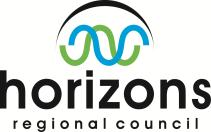
The October deep groundwater results show manganese in bore E2D has exceeded the
NZDWS. The January results show hardness, aluminum, iron, lead and manganese has
exceeded the NZDWS at various bores. These exceedances are associated with natural
peat deposits within the area and not from landfill leachate. Therefore this condition will be
assessed as
Comply – Full.
13.
Sampling of the groundwater wells within a 1.5 km radius down-flow or across-flow
from the landfill property boundary is to be carried out by the Permit Holders
representative upon receiving a written invitation from the bore owners. The
frequency of sampling is to be decided through discussion between the bore owner
and the Permit Holder. Initial analyses from individual bores are to be tested for the
parameters in the Comprehensive Analysis List in Condition 3. Subsequent testing
may be performed based on the Indicator Analysis List in Condition 3. Should
analysis of water obtained from any groundwater wells used for human drinking water
show concentrations of parameters which exceed the requirements of the Ministry of
Health’s Drinking Water Standards for New Zealand 2000, or repeated sampling from
a specific bore indicates a decrease in water quality, the Permit Holder shall report to
the Regional Council and the bore owner as soon as practicable on the significance
of the results. Where the exceedance or decreasing water quality can be attributed to
landfill leachate, the Permit Holder shall consult with the Regional Council and the
bore owner to determine if further investigation or remedial measures are required.
Appendix C of the January quarterly report contains monitoring results collected from the
Frank‟s property. An HDC email dated 14 April 2015 confirms the Frank‟s sample was
collected from a surface water drain. The purpose of this condition is to assess groundwater
against drinking water standards. Can you please confirm if the Frank‟s use the drain as a
source for domestic water use to ensure the intent of this condition is met.
Not Yet
Assessed
14. Any currently active and future lined landfill area shall be closed and remediated by:
a)
Compacting refuse to such an extent and consistent with CAE guidelines of
600-800 kg/m3, to ensure post closure settlement is minimised as far as
practicable; and
b)
Grading to a final slope of less or equal to 1V:3H (1 in 3) on any face; and
c)
Ensuring the landfill cap incorporates a layer at least 700 mm thick with a
permeability of no greater than 1 x 10(-7) m/s, or has a material and layer
structure that reduces rainwater infiltration to the waste to an equivalent
extent; and
d)
Establishing and maintaining a grass or tussock vegetation cover on the
capped landfill, unless it can be demonstrated to the Regional Council’s
satisfaction that a different vegetation cover can produce clear benefits
through reducing infiltration to the covered waste. Any vegetation cover
should be consistent with an ongoing capacity to monitor and maintain the
ongoing integrity of the landfill cap.
In-situ refuse density shall be determined through annual calculation based on
information derived from topographic surveys of the landfill and borrow areas, and
9
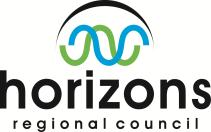 from weighbridge records. The survey shall be carried out within one month of the
from weighbridge records. The survey shall be carried out within one month of the
anniversary of the previous survey.
The old landfill and Stage 1 of the current landfill have been closed and capped in
accordance with this condition.
Comply – Full
Specific Conditions – discharge leachate to ground from existing landfill
15. The Permit Holder shall close and remediate the existing unlined landfill by April 2011 by:
a)
Grading to a final slope on the landfill faces and caps of between 1V:3H (1 in
3) and 1V:40H (1 in 40);
b)
Ensuring the final landfill surface is sloped to promote run-off toward the
outside of the landfill footprint and prevent surface water ponding on the
landfill cap;
c)
Ensuring the landfill cap incorporates a layer at least 700 mm thick. All
material added to the existing cap to bring the thickness up to 700 mm, or for
future cap maintenance purposes, is to have a permeability of no greater than
1 x 10(-7) m/s;
d)
Establishing and maintaining a grass or tussock vegetation cover on the
capped landfill consistent with an ongoing ability to monitor and maintain the
integrity of the landfill cap. The vegetation is to be managed to exclude tree
species that can potentially develop root systems capable of disrupting the
landfill cap and thereby enhancing rainwater infiltration;
e)
Monitoring the landfill cover on an annual basis to identify areas of differential
settlement slope stability issues, erosion and changing vegetation patterns,
including a topographic survey to ensure Conditions 15(a) to (d) continue to
be met; and
f)
The Permit holder shall submit an annual report to the Regional Council by 31
August each year for the duration of this Permit documenting the condition of
the unlined landfill and any maintenance carried out during the previous year.
The annual report shall address but not be limited to those aspects listed in
Conditions 15(a) to (e) above. The annual report shall include a plan of the
unlined landfill specifically documenting the shape of the closed landfill and
any changes during the previous year. [The annual report can be written in
conjunction with the annual report required as part of Condition 14 for
Consent Number 6009].
The area of the existing landfill to be remediated is defined as Area A on Figure 1
attached.
As observed during the site inspection the unlined section of the landfill remains closed and
capped.
Comply – Full
10
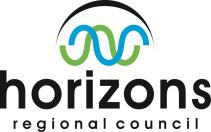 16.
Within one month following the remediation of the Levin landfill, the Permit Holder
shall report in writing to the Regional Council of the Permit Holder’s compliance with
16.
Within one month following the remediation of the Levin landfill, the Permit Holder
shall report in writing to the Regional Council of the Permit Holder’s compliance with
Conditions 14 and 15 of this permit.
Not Assessed
Specific Conditions – Discharge leachate to ground from lined landfill
Environmental Effects
24.
The Permit Holder shall have carried out the works described in Condition 14(a) to (d)
of this permit to rehabilitate:
a.
Any lined landfill area within four months following the closure of that lined
landfill area, if the landfill area is closed before 35 years from the granting of
this consent.
b.
Any lined landfill area before 35 years from the granting of this consent.
[Note: “lined landfil area” is defined as a distinct “cell” or stage of the landfil .]
HDC advised HRC in an email dated 14 April 2015 that Stage 2 has not been completely
landfilled and will receive an additional lift of refuse in the future. Therefore, in accordance
with condition 14 and 24 Stage 2 is not required to be capped as it is not, at the time of the
inspection, closed. As observed during the site inspection Stage 2 has received a layer of
intermediate sand capping which does not meet best practice to mitigate against off-site
landfill odour issues as stated in the MWH
Levin Landfill Odour Assessment report.
Comply
– Full
Monitoring and Reporting
28.
The Permit Holder shall inspect the landfill for leachate break out, settlement and
other adverse environmental effects at least once per month until such time as
discharge of refuse to the landfill ceases. Thereafter, the frequency of inspection
shall be determined in consultation with the Regional Council.
The closed landfill and Stage 1 of the current landfill were inspected during the routine site
inspection. No signs of leachate breakout or settlement were detected during the site
inspection.
Comply – Full
29.
The Permit Holder shall record the date, time, observations and any remedial action
as a result of Condition 28. The record shall be made available to the Regional
Council on request.
Copies of the above inspections are requested to be provided in the 2015 annual report.
Not
Yet Assessed
11
 Determination – Discharge Permit 6009
Determination – Discharge Permit 6009
Consent is granted to the Horowhenua District Council to discharge solid waste to
land at the Levin landfill, Hokio Road, Levin, legally described as Lot 3 DP 40743 Blk II
Waitohu Survey District, for a term expiring 35 years from the commencement of the
consent subject to the following conditions:
1.
This permit does not authorise the disposal of liquid waste to land at the Levin
Landfill.
Liquid waste is defined as:
Septic tank waste, grease trap waste, sewage and any material that contains free
liquids.
The presence of free liquids may be determined by either of the following methods,
whichever is most practicable at the time:
i.
The “Paint Filter Test”; or
ii.
Material which may be loaded, transported and deposited at the landfill
without the risk of free liquid seeping from the material, and without the risk of
having the deposited material flow under gravity down any slope on the landfill
shall be deemed to not contain free liquids.
No liquid wastes were discharged to the landfill at the time of the inspection.
Comply – Full
General Conditions – Discharge Solid Waste to Land
2.
The Permit Holder shall take all practicable measures to avoid the discharge of waste
from within the landfill to surrounding land. To this end, the Permit Holder shall
ensure:
a. The amount of refuse exposed at any one time is confined in dimension to
800 square metres of tipping face; and
GPS co-ordinates were collected from the edge of the tipping face during the site inspection.
Based on these readings the tipping face is 523 square metres which complies with the
above consent limit.
Comply – Full
b.
Exposed refuse is covered at the end of each day that refuse is received at
the landfill.
As discussed with the site operator the exposed refuse is covered with sand at the end of
each working day.
Comply – Full
3.
If refuse is discharged from within the active landfill areas to land outside the legal
boundary of the landfill property, the Permit Holder shall ensure that such waste is
cleared and removed to the landfill as soon as practicable.
Not Assessed
12
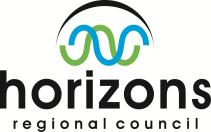 4.
The Permit Holder will monitor the landfill at least once every two weeks for the build
4.
The Permit Holder will monitor the landfill at least once every two weeks for the build
up of litter, paper and other deposits outside the active landfilling areas, and remove
such material as required.
As observed during the site inspection landfill staff removes windblown refuse from the
outskirts of the landfill. This refuse is collected in sacks and returned to the landfill as
required.
Comply – Full
5.
The Permit Holder shall regularly inspect for the presence of vermin, birds and other
pests take appropriate measures to control them.
A gas powered scare gun was operating at the time of the inspection to dissuade seagulls
from the site.
Comply – Full
Can you please confirm in the 2015 annual report how vermin numbers are monitored and
controlled on site.
6.
The Permit Holder shall regularly inspect the landfill for noxious weeds, and take
appropriate measures to control those noxious weeds.
As observed during the site inspection the gorse on the landfill property is controlled via
spraying.
Comply – Full
It is recommended the black berry and wilding pines on the side slopes of the closed landfill
be controlled. This is not because they are noxious weeds but will rather obstruct the side
slopes for a visual assessment of the cap.
13
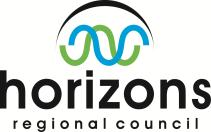
9.
The Permit Holder shall maintain a secure facility for any small quantities of
hazardous waste, pending a decision on treatment, disposal or transfer to another
facility.
The dedicated chemical lock up store remains on site for use.
Comply – Full
10.
Hazardous waste stored at the facility described in Condition 9 shall be stored in a
sealed and bunded area to avoid adverse effects from spills.
The lock up store remains in a bunded area.
Comply – Full
Specific Conditions – Discharge Solid Waste to Land at Existing Landfill
26.
Disposal of site-generated sludge from cess-pits, leachate ponds or other site
activities that contain free liquids is acceptable to facilitate site operation, provided
this does not adversely affect landfill stability or face operations.
As discussed during the site inspection the leachate ponds are scheduled to be desludged
with the contents to be disposed back into the landfill. This consent condition allows for this
to occur subject to maintaining landfill stability or face operations.
Not Assessed
14
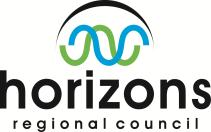 Determination – Discharge Permit 6011
Determination – Discharge Permit 6011
2. The Permit Holder will ensure dust is controlled on access roads and on the landfill, if
necessary, by watering or other methods.
Dry conditions were present during the site inspection. Dust from the rubbish truck
movements on the access track were not discharging beyond the property site therefore it
was not deemed at the time of the inspection to control dust on the access tracks.
Comply –
Full
3.
There shall be no discharge of odour or dust from the landfill that in the opinion of a
Regional Council Enforcement Officer is noxious, dangerous, offensive, or
objectionable beyond the property boundary. The Permit Holder will also ensure that:
The tipping face, landfill gas collection pipes associated with Stage 1 and 2, leachate
collection sump and the leachate pond was inspected during the site inspection. No offensive
odours or dust were detected at these locations during the site inspection.
As discussed with the complainants during a NLG meeting no offensive or objectionable
odours have been detected at their residence since the start of 2015. Based on comments
contained within the MWH
Levin Landfill Odour Assessment report this condition will be
graded as
Comply – At Risk. This is because HDC comply with this condition however the
MWH report indicates there is a risk of non-compliance occurring as Stage 1 is caped with
sand which is not considered best practice to manage landfill odours.
a.
On-site and off-site Health and Safety Effects of landfill gas being emitted by
the old landfill should be quantified by sampling groundwater monitoring wells
for evidence of landfill gas when groundwater samples are taken from the
wells. As a minimum, the gases tested for are to include methane, carbon
dioxide and oxygen; and
b.
Any building constructed on the landfill site is adequately ventilated.
Not Assessed
4. There shall be no deliberate burning of waste or other material at the landfill. If fires
occur at the landfill they shall be extinguished as quickly as possible.
There were no signs of refuse being burnt during the routine inspection (i.e. burn drums or
burn piles).
Comply – Full
5.
The Permit Holder shall take all practicable steps to avoid, remedy or mitigate
significant adverse effects of the discharge of landfill gases to air.
Landfill gas is collected and destroyed in an open candle stick gas flare. The MWH
Levin
Landfill Odour Assessment report identifies several best practice options to reduce the risk of
producing odour discharging beyond the property boundary. HDC advised in an email dated
16 February the following will be carried out to avoid, remedy or mitigate landfill gas odour
beyond the boundary:
Cap Stage 2;
Install a biofilter on the leachate collection sump;
Leachate pond desludged by April 2015;
15
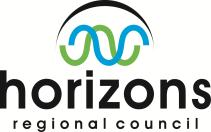
Implement an odour assessment on the Grange property by March 2015; and
Install an ambient air quality monitor and weather station.
Can you please confirm the dates the above are expected to be completed.
Not Yet
Assessed
16
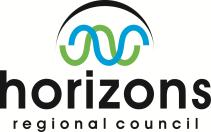 Determination - Resource Consent 6012
Determination - Resource Consent 6012
2.
Stormwater run-off contaminated by leachate to an extent that it may cause adverse
environmental effects shall be regarded as leachate.
As observed during the site inspection stormwater falling on Stage 2 and 3 is retained within
the liner and treated as leachate.
Comply – Full
3.
Stormwater falling on any operational cell shall be regarded as leachate.
See comments under condition 2.
Comply – Full
4.
The Permit Holder shall carry out such stormwater or sediment control measures as
are necessary to ensure that sediment is not carried and deposited beyond the
boundaries of the site.
As observed during the site inspection stormwater from site is discharged to a centralised
soakage pit. As noted during a previous site inspection the soakage pit is fully contained
within the landfill site boundary thus ensuring sediment is not deposited beyond the property
boundary.
Comply – Full
5.
The Permit Holder shall ensure that:
A.
stormwater drains within the site are maintained to ensure that the flow of
stormwater around the landfill is unrestricted and the potential for stormwater
contamination is reduced; and
B.
stormwater diversion systems, including all drains and ponds, are kept clear of
refuse ; and
C.
any sediment ponds are regularly cleaned to ensure effective settling out of
suspended solids.
The stormwater drains were free of debris or refuse at the time of inspection. This would
allow for unrestricted flow of stormwater to the soakage pond.
Comply – Full
17
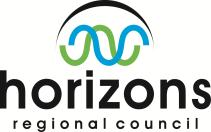 Decision – Discharge Permit 102259
3.
The activities authorised by this Permit shall be restricted to the discharge of
Decision – Discharge Permit 102259
3.
The activities authorised by this Permit shall be restricted to the discharge of
stormwater to land via ground soakage originating from the existing fill site or any part
of the new lined landfill that has had, or is intended to have, refuse placed beneath or
upon it, as shown on Plan C102259 attached to and forming part of this Discharge
Permit.
As observed during the site inspection stormwater runoff from the closed landfill and part of
Stage 1 is discharged to stormwater soakage areas in accordance with Plan C102259.
Comply – Full
4.
All works and structures relating to this Discharge Permit shall be designed and
constructed to conform to best engineering practices and shall at all times be
maintained to a safe and serviceable standard.
The stormwater drains associated with the closed landfill, centralised soakage pond and part
of Stage 1 was determined to be in serviceable working condition during the site inspection.
Comply – Full
5.
The Permit Holder shall ensure that the stormwater system, including all drains and
ponds, is kept clear of refuse at all times.
The soakage pond and stormwater drains were free of refuse during the site inspection.
Comply – Full
6.
The Permit Holder shall ensure the stormwater soakage ponds are inspected
regularly and maintained to optimise their performance at all times. This shall include
de-sludging or remediating the ponds as required.
The soakage ponds were dry during the site inspection indicating there is no long term
soakage performance associated with the soakage pond.
Comply – Full
7.
There shall be no ponding in the stormwater soakage areas 12 hours after the last
rain event.
There was no stormwater ponding in the soakage area identified during the inspection
however rainfall had not occurred recently.
Not Assessed
8.
There shall be no runoff or existing discharge of stormwater beyond the property
boundary that has originated on any landfill area or new lined landfill area that has
had, or is intended to have, refuse placed on it.
There were no signs stormwater has discharged beyond the lined section of the landfill at the
time of the inspection.
Comply – Full
18
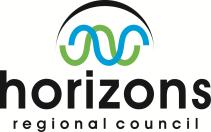 9.
As far as practically possible, the Permit Holder shall ensure that all stormwater from
the existing landfill area is directed to a centralised soakage area to the south of the
9.
As far as practically possible, the Permit Holder shall ensure that all stormwater from
the existing landfill area is directed to a centralised soakage area to the south of the
existing fill, as shown on Plan C 102259.
As observed during the site inspection stormwater from closed sections of the landfill are
diverted to the centralised section of the closed landfill.
Comply – Full
10.
Where it is practical and economical to do so, the Permit Holder shall ensure that
within the operational landfill cell the minimum amount of stormwater shall be allowed
to come into contact with refuse. This shall be effected by constructing impermeable
barriers, diversion drains or bunds on the side slopes and within the base of the
landfill.
Areas were identified on Stage 1 where clean stormwater runoff could be diverted from
Stage 3 therefore reducing the volume of leachate generated. Can you confirm if HDC plans
to install a stormwater cut-off drain on Stage 1 to reduce the volume of leachate generated
on site.
Not Yet Assessed 11.
There shall be no contamination of stormwater with leachate. Leachate includes any
stormwater within an operational cell that is not separated from refuse by a barrier as
defined in Condition 10.
As observed during the site inspection stormwater falling on Stage 3 is retained as leachate
within the lined portion of the landfill and not discharged into the stormwater network.
Comply – Full
12.
The Permit Holder shall ensure that a suitable stormwater soakage area is available
for a given design storm and the area of the operational cell from which the
stormwater is collected.
A stormwater soakage pond is available at the time of the inspection.
Comply – Full
13.
Areas designated for stormwater discharge to land and their catchment and
reticulation system shall be identified and located on site plans and their dimensions
submitted for approval by horizons.mw’s Team Leader Compliance prior to their use.
A stormwater plan has previously been submitted to HRC.
Comply – Full
14.
The Permit Holder shall monitor groundwater quality in at least one upgradient and
one downgradient bore of the existing landfill stormwater soakage area, and at least
one upgradient and two downgradient bores of the new landfill area. The location
and number of bores is to be determined in consultation with horizons.mw’s Team
Leader Compliance. Groundwater samples shall be taken quarterly in January, April,
July and October for the term of this Discharge Permit, beginning in October 2002,
and analysed for the following parameters:
PH, Conductivity, Ammonia-N, Nitrate-N, Sodium, Boron, Chloride and Iron
Bores G1S, D2, D3(r), D4, E1S, E2S and F3 are sampled for the above parameters in
accordance with this condition.
Comply – Full
19
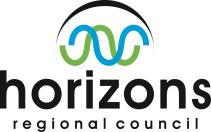 15.
Monitoring bores required in Condition 14 of this Discharge Permit can be
incorporated into the monitoring programme of other Levin Landfill Consents (6009-
15.
Monitoring bores required in Condition 14 of this Discharge Permit can be
incorporated into the monitoring programme of other Levin Landfill Consents (6009-
6011 and 7289), providing the information sought is obtained at the frequency
specified and reported as required for this Permit.
The above bores are incorporated into the landfill monitoring programme and assessed
against relevant consent conditions.
Comply – Full
16.
The results of monitoring under Condition 14 of this permit shall be reported to
Horizon Manawatu’s Team Leader Compliance by 31 August each year for the
duration of this Permit beginning 31 August 2003. The annual report shall be
supplemented by the raw water quality analysis data being forwarded to the Regional
Council as soon as practically possible following the receipt of laboratory analysis
certificates.
The above sampling results are included in the MWH landfill monitoring reports.
Comply –
Full
18.
Should any groundwater and surface water parameters tested for under Condition 14
of this consent exceed the Australian and New Zealand Environment and
Conservation Council Water Quality Guidelines (2000) for Livestock Watering, the
Permit Holder shal report to horizons.mw’s Team Leader Compliance as soon as
practicable on the significance of the result, and where the change can be attributed
to the landfill operation, consult with horizons.mw’s Team Leader Compliance to
determine if further investigation or remedial measures are required.
The October and January monitoring results indicates the groundwater tested under
condition 14 has not exceeded the live stock watering guidelines.
Comply – Full
20
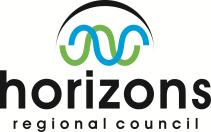 CONCLUSION AND RECOMMENDATIONS
CONCLUSION AND RECOMMENDATIONS
The assessment of groundwater and surface water monitoring results contained in the
October 2014 and January 2015 Levin Landfill quarterly reports shows compliance against
relevant resource consent conditions. Based on observations during the 23 March 2015 site
inspection and the monitoring results the overall grading of this compliance report is
Comply
– Full.
An HRC compliance report dated 1 October 2014 identified an increasing trend in leachate
parameters in bore C2DD. The report contained a recommendation for HDC to investigate if
this increase and determine if the bore has been sealed appropriately. HDC advised HRC in
a letter dated 3 October 2014 that this bore will be investigated by 17 October 2014. To date
I am unaware if HRC has received confirmation this task has been carried out and any
remedial actions required. Can you please update me by
29 May 2015 regards this issue.
Based on the routine inspection and assessing the quarterly report monitoring data the
following points require further information to be provided to HRC.
ELS laboratories do not hold accreditation for Volatile Fatty Acids. Can you please confirm to
HRC by 29 May 2015 if HDC has carried out a duplicate sample to satisfy condition 10 of
resource consent 6010.
In light of leachate contaminated groundwater entering the Tatana Drain it is required HDC
include this information when calculating future mass load calculations in accordance with
condition 11(d) of resource consent 6010.
Can you confirm if the Frank‟s drain is used for domestic supply to ensure the intent of
condition 13 of resource consent 6010 is met and can be assessed.
Leachate breakout and settlement observation records for the 2014/15 period are required to
be included in the 2015 annual report in accordance with condition 28 and 29 of resource
consent 6010.
It is recommended the wilding pines and black berry on the old landfill cap are removed. This
is they obstruct the side slope for a visual assessment of the cap.
Condition 3 of resource consent 6011 was graded as
Comply – At Risk. This is because
HDC is complying, since January 2015 and at the time of the inspection. However there is a
risk of a non-compliance occurring based on comments contained in the MWH
Levin Landfill
Odour Assessment report.
Comments under condition 5 of resource consent 6011 relates to HDC efforts to reduce or
mitigate against odours being discharged beyond the property boundary. Can you please
confirm by
29 May 2015 when these tasks are expected to be carried out.
21
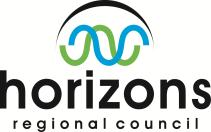

Areas of Stage 1 were identified during the site inspection where clean stormwater could be
diverted from Stage three. Can you confirm if HDC plan to install a cut off drain to reduce the
volume of leachate generated on site in accordance with condition 10 of resource consent
102259.
If you have any queries about the attached report, please contact me via email
[email address] or on 0508 800 800.
Kind regards,
Stuart Standen
CONSENTS MONITORING OFFICER
22
Table 1. Compliance Assessment Guideline for Individual Consents
Site Compliance
Examples
Grade
Comply - Exceeds
Consent holder has implemented practices, procedures, systems that are over and above that required by the
resource consent or consents for the site which are having a tangible environmental benefit.
Comply - Full
Complying with all conditions of consent; and/or
A non-compliance has occurred beyond the control of the consent holder; and/or
Comply
One Minor Non-Compliance with a condition of the resource consent.
Comply – At Risk
At Risk grading identified against key condition(s) of one or more of consents for the site.
Comply – On Track
At risk grading identified AND site has entered into a Compliance Pathway Agreement (CPA) to reduce system
risks and achieve best practice.
Non-Compliance
There have been two „first time‟ Non -Compliances with the conditions of consent; and/or
There has been one repeat Minor Non-Compliance with the same or similar condition.
Significant
Non-
There has been at least one Significant Non-Compliance Rating with a condition; and/or
Compliance
There has been at least two repeat Non- Compliance Ratings associated with the same or similar condition;
and/or
There have been three or more „first time‟ Non Compliance Ratings.
Not assessed
Monitoring has not been undertaken of this consent during the reporting period.
23
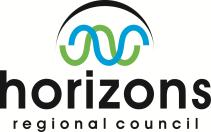 Table 2. Compliance Assessment Guideline for Individual Conditions
Condition
Compliance
Adverse Effects Scale
Examples (not exhaustive)
Grade
Table 2. Compliance Assessment Guideline for Individual Conditions
Condition
Compliance
Adverse Effects Scale
Examples (not exhaustive)
Grade
Consent holder has implemented practices, systems, and
Comply
–
procedures that are over and above that required by the
Nil.
Excellent
resource consent and are having tangible environmental
benefit.
Conditions of consent are fully complied with.
Comply - Full
Nil.
Sampling out of sequence or late due to circumstances outside
of consent holders control (e.g. flow related sampling).
Nil – de-minimus.
(
dictionary: de-minimus - need Compliant at time of inspection but management / system
not be considered. In terms of
Comply
– At
deficiencies indicate there is a real risk of a non-compliance
the RMA the term means an
Risk
occurring (e.g. insufficient effluent storage, poor irrigator
effect which is less than minor, performance).
of no consequence, so trifling
that it should be disregarded).
System has been identified as At Risk, but the consent holder
Comply – On
has agreed to enter into a Compliance Pathway Agreement
Nil – de-minimus.
Track
(CPA) to ensure compliance is consistently achieved. Consent
holder is currently complying with conditions of consent.
One-off failure to comply with a condition of consent (e.g. One
off minor exceedance in key parameter in 6-months worth of
sampling (allows for two minor exceedances in a 12-month
period).
Minor
Non-
Intent of condition met however data and / or report provided
De-minimus to less than minor.
Compliance
late (no later than 6 weeks).
First up failure to install a water meter for a small take
(stockwater), provide management plan or environmental
information (e.g. water quality information) within required
timeframes.
More than minor and / or Four minor exceedances of key parametres for one year‟s
ongoing
(
dictionary:
defines
„minor‟
as
worth of sampling / data.
lesser
or
Non
-
Repeat failure to provide a report or monitoring data.
comparatively small in size or
Compliance
Repeat Failure to undertaken sampling.
importance).
Failure to install water meter for a more than minor take (e.g.
Ongoing (
dictionary: continuing irrigation).
to exist).
Water quality results indicate there is a potential for or an
More than minor to significant, actual effect which is more than minor that is not authorised by
serious and / or ongoing.
the resource consent.
Significant
(
dictionary: Unauthorised discharge of wastewater / effluent into water or
important,
noteworthy, onto land where it may enter water, excessive ponding of
Significant Non-
consequential).
effluent on the land surface.
Compliance
Serious (
dictionary: important, Repeated failure to provide a report/monitoring data/
demanding consideration, not management plans/install water metering equipment etc.
slight).
Repeated failure to undertake sampling.
Ongoing: (
dictionary: continuing Repeated failure to comply with authorised discharge or water
to exist).
take volumes.
Applies to conditions that are no longer applicable. Generally
relates to historic conditions that may require provision of a
Not Applicable
management plan, which has been provided and consent
requires no further action.
Not Assessed
Monitoring not undertaken of consent condition.
24

























